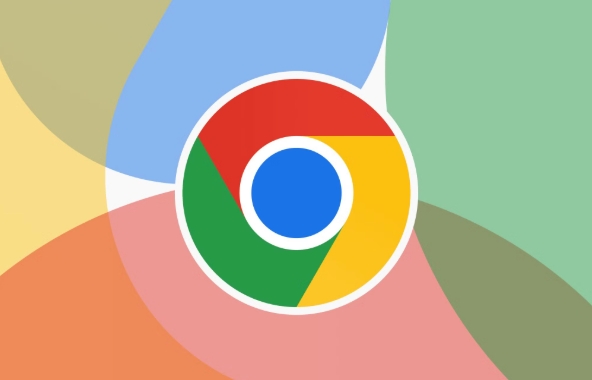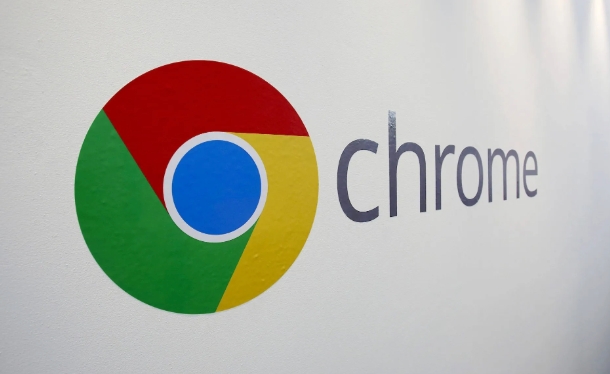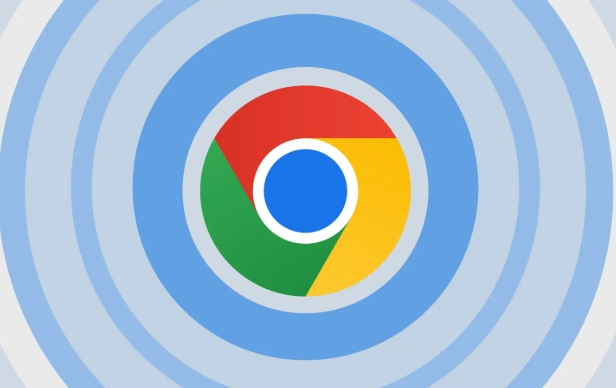Chrome right-click failure is usually caused by websites or extensions. Solutions include disabling JavaScript, checking extensions, and using shortcut keys. 1. The website may block right-click through JavaScript to protect content; 2. Extensions such as ad blocking tools may interfere with the right-click function, you can try to turn off or update the extension; 3. Use Shift F10 shortcut keys or developer tools to bypass the restrictions; 4. Temporarily close JavaScript to restore the right-click menu. These methods can effectively deal with most right-click bans.

You're not alone if you've tried to right-click in Chrome and found it doesn't work the way you expect. Sometimes, websites disable right-clicking on purpose, and other times it's due to an extension or setting interfering with normal behavior. Here's what might be going on and how to handle it.

Websites block right-click for protection
A lot of sites — especially those with images, videos, or sensitive content — intentionally disable right-click menus. Their goal is usually to prevent people from easily copying content or downloading media. You'll often see this on image galleries, online courses, or streaming platforms.

- It's done using simple JavaScript code
- Doesn't always stop determined users, though
- Can be bypassed by disabling JavaScript (more on that later)
If you're trying to copy text or download something and can't right-click, this is likely the reason.
Extensions interfere with right-click behavior
Chrome extensions are powerful, but they can also mess with how your browser works. Some ad blockers, productivity tools, or custom scripts may override or block right-click actions unintentionally.

To check if it's an extension:
- Go to
chrome://extensions/ - Toggle off extensions one by one and test right-click after each
- Start with script managers like Tampermonkey or privacy tools
Sometimes just updating or re-installing the extension fixes the issue.
How to get around a disabled right-click
If you're sure the site isn't doing anything malicious and you just want to access the usual menu, here are a few methods that usually work:
- Keyboard shortcut : Shift F10 does the same as a right-click
- Copy without right-click : Highlight the text, then press
Ctrl C(orCmd Con Mac) - Use Developer Tools :
- Right-click somewhere else on the page that does work
- Or use the shortcut
Ctrl Shift I(Cmd Option Ion Mac) to open DevTools directly
- Disable JavaScript temporarily :
- Open Chrome settings > Site settings > JavaScript
- Turn it off for that site (note: some pages will break completely)
These tricks won't work everywhere, but they help in most cases where right-click is blocked.
It's not always about copying stuff
While many users try to right-click so they can save an image or copy text, there are plenty of other uses — like inspecting elements for learning, debugging a website, or even translating content. If you're a developer or someone who likes tinkering, getting blocked from right-click can slow you down more than just being annoying.
That's why knowing how to bypass these restrictions is useful beyond just "getting what you want" from a webpage.
So yeah, Chrome lets you right-click by default — unless something gets in the way. Whether it's a sneaky script or a misbehaving extension, the problem is almost always fixed. Mostly, it's just a small announcement that's easier to work around than it seems at first.
The above is the detailed content of Why can't I right-click in Chrome. For more information, please follow other related articles on the PHP Chinese website!

Hot AI Tools

Undress AI Tool
Undress images for free

Undresser.AI Undress
AI-powered app for creating realistic nude photos

AI Clothes Remover
Online AI tool for removing clothes from photos.

Clothoff.io
AI clothes remover

Video Face Swap
Swap faces in any video effortlessly with our completely free AI face swap tool!

Hot Article

Hot Tools

Notepad++7.3.1
Easy-to-use and free code editor

SublimeText3 Chinese version
Chinese version, very easy to use

Zend Studio 13.0.1
Powerful PHP integrated development environment

Dreamweaver CS6
Visual web development tools

SublimeText3 Mac version
God-level code editing software (SublimeText3)
 How to stop Chrome from updating in the background on Mac
Jul 21, 2025 am 12:41 AM
How to stop Chrome from updating in the background on Mac
Jul 21, 2025 am 12:41 AM
To prevent Chrome from automatically updating on Mac, it can be done by disabling update services, modifying permissions, and restricting network access. 1. Use terminal commands to disable the GoogleSoftwareUpdate daemon to prevent background updates; 2. Modify update directory permissions to prevent Chrome from starting the update process by itself; 3. Restrict Chrome's outbound network connection through system firewall or third-party tools to further eliminate update requests. Using these methods in combination can effectively prevent Chrome from being automatically updated.
 How to stop Chrome from automatically opening PDF files
Jul 21, 2025 am 12:09 AM
How to stop Chrome from automatically opening PDF files
Jul 21, 2025 am 12:09 AM
To let Chrome download directly instead of opening it when clicking on the PDF link, 1. Enter chrome://settings/content/pdfDocuments to check "DownloadPDFfilesinsteadofautomatically opening theminChrome"; 2. Check whether there are plug-ins such as Lightpdf or Smallpdf interfering behavior, you can try to disable the test; 3. You can use the developer tools to copy the link and paste the new tag to trigger the download. The above methods can be selected according to the situation.
 How to fix screen tearing when scrolling in Chrome
Jul 25, 2025 am 12:55 AM
How to fix screen tearing when scrolling in Chrome
Jul 25, 2025 am 12:55 AM
The screen tear occurs when the Chrome browser scrolls, which is usually caused by the out-of-synchronization of rendering and refresh. The solutions are as follows: 1. Ensure that hardware acceleration is enabled, you can manually check the settings and restart the browser; 2. Forcefully enable Compositor and related options to optimize rendering; 3. Check the display refresh rate, use single-screen testing, and enable VSync or adaptive synchronization technology on supported devices; 4. Update the graphics card driver or replace the display interface such as using the DP interface. It is recommended to start the troubleshooting with simple steps and gradually adjust to find the best configuration.
 How to fix Chrome profile sync getting stuck in setup
Jul 25, 2025 am 01:10 AM
How to fix Chrome profile sync getting stuck in setup
Jul 25, 2025 am 01:10 AM
The problem of Chrome sync stuck can be solved through the following steps: 1. Check the network connection and Google account status to ensure normal access; 2. Log out and log in to the Chrome account again; 3. Clear the synchronized data and restart the browser; 4. Reset Chrome settings; 5. Try the traceless mode or new user profile. Sequentially checking can effectively restore the synchronization function.
 Chrome keeps opening new tabs by itself
Jul 22, 2025 am 12:22 AM
Chrome keeps opening new tabs by itself
Jul 22, 2025 am 12:22 AM
The problem of Chrome automatically popping up new tabs is usually caused by malicious extensions, advertising scripts, or browser hijacking. The solutions are as follows: 1. Check and uninstall suspicious extensions, especially ad-class plug-ins; 2. Clear browser caches and cookies to eliminate data corruption; 3. Check whether the homepage and default search engine settings have been tampered with and manually corrected; 4. Use antivirus software such as WindowsDefender or Malwarebytes to scan and clear potential malware; 5. Finally, try resetting Chrome settings to restore the default configuration. Troubleshooting in this order can effectively solve most abnormal labeling problems.
 How to fix Chrome opening new windows instead of tabs
Jul 26, 2025 am 01:29 AM
How to fix Chrome opening new windows instead of tabs
Jul 26, 2025 am 01:29 AM
1. Check whether the shortcut attribute has additional parameters and delete it; 2. Clear cache and switch startup settings, or create new user information; 3. Extend the impact and disable the problem plug-in through traceless mode. Chrome pops up new windows instead of tabs usually due to exceptions in shortcut parameters, cache configuration conflicts, or third-party extension interference. Check and adjust the corresponding settings in turn to resolve.
 How to fix Chrome when it's not printing correctly
Jul 26, 2025 am 02:46 AM
How to fix Chrome when it's not printing correctly
Jul 26, 2025 am 02:46 AM
Chrome printing exceptions can be solved in the following ways: 1. Check the printer selection, paper size, orientation, zooming and background graphics settings in the print preview; 2. Try stealth mode to eliminate extended interference and clear cache; 3. Update or reinstall the printer driver, replace the general driver or use the "Print as PDF" method; 4. Finally, you can reset the Chrome settings to restore the default. Most problems can be solved through the first few steps. If they still fail, you can export PDF to print.
 How to use Chrome's built-in 'contrast ratio' checker
Jul 20, 2025 am 12:40 AM
How to use Chrome's built-in 'contrast ratio' checker
Jul 20, 2025 am 12:40 AM
Chrome's "Contrast Ratio" check tool can be found directly under the "Computed" panel of the developer tool, which is used to determine whether the text and background colors meet the accessibility standards. Select the text element when using it, open the color selector next to the "color" property, and the contrast ratio will be displayed at the bottom. If it is below the standard, a red warning will be displayed, and if it is met, it will be green. The WCAG standard requires at least 4.5:1 text and at least 3:1 large fonts to ensure that people with visual impairment can also read clearly. Common questions include light-colored text, similar color matching or picture background interference, etc. This tool is suitable for casual inspection when debugging styles, especially when modifying color schemes or repairing UI components, and it is recommended to evaluate translucent or






